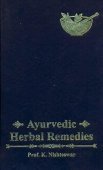Jyotishmati, Jyotiṣmatī, Jyotirmatī, Jyotirmati: 11 definitions
Introduction:
Jyotishmati means something in Hinduism, Sanskrit, Jainism, Prakrit, biology. If you want to know the exact meaning, history, etymology or English translation of this term then check out the descriptions on this page. Add your comment or reference to a book if you want to contribute to this summary article.
The Sanskrit term Jyotiṣmatī can be transliterated into English as Jyotismati or Jyotishmati, using the IAST transliteration scheme (?).
In Hinduism
Ayurveda (science of life)
Rasashastra (Alchemy and Herbo-Mineral preparations)
Source: Wisdom Library: Rasa-śāstraJyotiṣmatī (ज्योतिष्मती):—One of the sixty-seven Mahauṣadhi, as per Rasaśāstra texts (rasa literature). These drugs are useful for processing mercury (rasa), such as the alchemical processes known as sūta-bandhana and māraṇa.
Nighantu (Synonyms and Characteristics of Drugs and technical terms)
Source: WorldCat: Rāj nighaṇṭuJyotiṣmatī (ज्योतिष्मती) is the Sanskrit name for a medicinal plant identified with Celastrus paniculatus (black oil plant or intellect tree) from the Celastraceae or “staff vine” or “bittersweet family” of flowering plants, according to verse 3.82 of the 13th-century Raj Nighantu or Rājanighaṇṭu. Jyotiṣmatī is commonly known in Hindi and Bangali as Mālkaṅganī; in Marathi as Kākamardanka and Pegi; in Gujarati as Malkangani and in Tamil as Vallulavaī.
Jyotiṣmatī is mentioned as having twelve synonyms: Svarṇalatā, Analaprabhā, Jyotirlatā, Kaṭabhī, Supiṅgalā, Dīptā, Medhyā, Matidā, Durjarā, Sarasvatī and Amṛtā.
Properties and characteristics: “Jyotiṣmatī is bitter in rasa (tikta) dry (rūkṣa) and slightly pungent (kaṭu). It quells vāta and kapha. While Tejovatī gives burning sensations. It stimulates digestion and enhances the function of the brain i.e. mental power (medhā) and wisdom (prajñā)”.
Kalpa (Formulas, Drug prescriptions and other Medicinal preparations)
Source: archive.org: Science And Technology In Medievel India (kalpa)Jyotiṣmatī (ज्योतिष्मती) or Jyotiṣmatītaila refers to Kalpa (medicinal preparation) described in the Auṣadhikalpa, as mentioned in A. Rahman’s Science and Technology in Medievel India: A bibliography of source materials in Sanskrit, Arabic and Persian.—Ancient and medieval India produced a wide range of scientific manuscripts and major contributions lie in the field of medicine, astronomy and mathematics, besides covering encyclopedic glossaries and technical dictionaries.—The Auṣadhikalpa is a medical work of the type of Materia Medica giving twenty-six medical preparations [e.g., Jyotiṣmatī-taila] to be used as patent medicines against various diseases.
Source: Shodhganga: Edition translation and critical study of yogasarasamgrahaJyotiṣmatī (ज्योतिष्मती) refers to the medicinal plant known as “Celastrus paniculatus Willd.” and is dealt with in the 15th-century Yogasārasaṅgraha (Yogasara-saṅgraha) by Vāsudeva: an unpublished Keralite work representing an Ayurvedic compendium of medicinal recipes. The Yogasārasaṃgraha [mentioning jyotiṣmatī] deals with entire recipes in the route of administration, and thus deals with the knowledge of pharmacy (bhaiṣajya-kalpanā) which is a branch of pharmacology (dravyaguṇa).

Āyurveda (आयुर्वेद, ayurveda) is a branch of Indian science dealing with medicine, herbalism, taxology, anatomy, surgery, alchemy and related topics. Traditional practice of Āyurveda in ancient India dates back to at least the first millenium BC. Literature is commonly written in Sanskrit using various poetic metres.
Purana and Itihasa (epic history)
Source: Cologne Digital Sanskrit Dictionaries: The Purana IndexJyotiṣmatī (ज्योतिष्मती).—(River) a tributary of the Sarasvatī, flows from Varcovan lake.*
- * Brahmāṇḍa-purāṇa II. 18. 66. Matsya-purāṇa 121. 65; Vāyu-purāṇa 47. 63.

The Purana (पुराण, purāṇas) refers to Sanskrit literature preserving ancient India’s vast cultural history, including historical legends, religious ceremonies, various arts and sciences. The eighteen mahapuranas total over 400,000 shlokas (metrical couplets) and date to at least several centuries BCE.
In Jainism
General definition (in Jainism)
Source: archive.org: TrisastisalakapurusacaritraJyotirmatī (ज्योतिर्मती) is the wife of Viśvāvasu (father of Śrīkumāra), according to the Jain Ramayana and chapter 7.2 [Rāvaṇa’s expedition of conquest] of Hemacandra’s 11th century Triṣaṣṭiśalākāpuruṣacaritra: an ancient Sanskrit epic poem narrating the history and legends of sixty-three illustrious persons in Jainism.
Accordingly, as Indra Camara said to Madhu (son of king Harivāhana): “[...] They ruled for a long time, devoted friends as before. Sumitra became a mendicant, died, and became the god Īśāna. Then he fell and became you, the son of Harivāhana, king of Mathurā, named Madhu, strong-armed, son of Mādhavī. Prabhava wandered through births for a long time and became the son of Viśvāvasu and Jyotirmatī, named Śrīkumāra. He practiced penance with a nidāna, died in the course of time, and became I, the Indra Camara, your friend of a former birth”.

Jainism is an Indian religion of Dharma whose doctrine revolves around harmlessness (ahimsa) towards every living being. The two major branches (Digambara and Svetambara) of Jainism stimulate self-control (or, shramana, ‘self-reliance’) and spiritual development through a path of peace for the soul to progess to the ultimate goal.
Biology (plants and animals)
Source: Wisdom Library: Local Names of Plants and DrugsJyotishmati [ജ്യോതിഷ്മതി] in the Malayalam language is the name of a plant identified with Cardiospermum halicacabum L. from the Sapindaceae (Soapberry) family. For the possible medicinal usage of jyotishmati, you can check this page for potential sources and references, although be aware that any some or none of the side-effects may not be mentioned here, wether they be harmful or beneficial to health.
Jyotishmati [ज्योतिष्मती] in the Nepali language, ibid. previous identification.
Jyotishmati [ଜ୍ଯୋତିଷ୍ମତୀ] in the Odia language, ibid. previous identification.
Jyotishmati [జ్యోతిష్మతి] in the Telugu language, ibid. previous identification.
Jyotishmati [ज्योतिषमति] in the Sanskrit language is the name of a plant identified with Celastrus paniculatus Willd. from the Celastraceae (Spike-thorn) family having the following synonyms: Celastrus dependens.
Source: Google Books: CRC World Dictionary (Regional names)Jyotismati in India is the name of a plant defined with Cardiospermum halicacabum in various botanical sources. This page contains potential references in Ayurveda, modern medicine, and other folk traditions or local practices It has the synonym Cardiospermum microcarpum Kunth (among others).
Example references for further research on medicinal uses or toxicity (see latin names for full list):
· Journal of Helminthology (2000)
· Botanica Acta (1990)
· Journal of Ethnobiology and Ethnomedicine (2006)
· Rumphia (1849)
· Nova Genera et Species Plantarum (1821)
· Linnaea (1844)
If you are looking for specific details regarding Jyotismati, for example side effects, chemical composition, health benefits, extract dosage, diet and recipes, pregnancy safety, have a look at these references.

This sections includes definitions from the five kingdoms of living things: Animals, Plants, Fungi, Protists and Monera. It will include both the official binomial nomenclature (scientific names usually in Latin) as well as regional spellings and variants.
Languages of India and abroad
Sanskrit dictionary
Source: Cologne Digital Sanskrit Dictionaries: Edgerton Buddhist Hybrid Sanskrit DictionaryJyotiṣmati (ज्योतिष्मति).—name of a Bodhisattva: Mahāvyutpatti 698 (with epithet kumārabhūta).
Source: Cologne Digital Sanskrit Dictionaries: Monier-Williams Sanskrit-English Dictionary1) Jyotiṣmatī (ज्योतिष्मती):—[=jyotiṣ-matī] [from jyotiṣ-mat > jyotiṣ > jyut] f. (tī) ‘star-illumined’, night, [cf. Lexicographers, esp. such as amarasiṃha, halāyudha, hemacandra, etc.]
2) [v.s. ...] a kind of sacrificial brick, [Vājasaneyi-saṃhitā; Taittirīya-saṃhitā i]
3) [v.s. ...] a kind of Triṣṭubh
4) [v.s. ...] = ṣkā, [Suśruta; Varāha-mihira’s Bṛhat-saṃhitā]
Sanskrit, also spelled संस्कृतम् (saṃskṛtam), is an ancient language of India commonly seen as the grandmother of the Indo-European language family (even English!). Closely allied with Prakrit and Pali, Sanskrit is more exhaustive in both grammar and terms and has the most extensive collection of literature in the world, greatly surpassing its sister-languages Greek and Latin.
Kannada-English dictionary
Source: Alar: Kannada-English corpusJyōtiṣmati (ಜ್ಯೋತಿಷ್ಮತಿ):—
1) [noun] a woman with bright, effulgent body.
2) [noun] the period of actual darkness after sunset and before sunrise; night.
3) [noun] the vine Cardiospermum halicacabum of Sapindaceae family.
Kannada is a Dravidian language (as opposed to the Indo-European language family) mainly spoken in the southwestern region of India.
See also (Relevant definitions)
Partial matches: Jyotis, Mati.
Starts with: Jyotishmatikalpa, Jyotishmatitaila, Jyotishmatitige.
Ends with: Mahajyotinmati, Purastagjyotishmati, Uparishtajjyotishmati.
Full-text (+49): Analaprabha, Uparishtajjyotishmati, Medhavini, Mahajyotinmati, Jvalini, Sutaila, Shailasuta, Katabhi, Pitataila, Svarnalata, Tejasvini, Supingala, Tejovati, Yashasvini, Dipta, Purastagjyotishmati, Suvarnalata, Niphala, Vayasi, Tivra.
Relevant text
Search found 29 books and stories containing Jyotishmati, Jyotiṣmatī, Jyotirmatī, Jyotirmati, Jyotish-mati, Jyotiṣmati, Jyotir-matī, Jyōtiṣmati, Jyotiṣ-matī, Jyotismati, Jyotir-mati, Jyotis-mati; (plurals include: Jyotishmatis, Jyotiṣmatīs, Jyotirmatīs, Jyotirmatis, matis, Jyotiṣmatis, matīs, Jyōtiṣmatis, Jyotismatis). You can also click to the full overview containing English textual excerpts. Below are direct links for the most relevant articles:
Rasa Jala Nidhi, vol 3: Metals, Gems and other substances (by Bhudeb Mookerjee)
Part 7 - Extraction of oil from seeds of Jyotismati < [Chapter XXXII - Extraction of oil from seeds]
Part 2 - Purification of silver < [Chapter II - Metals (2): Raupya (silver)]
Part 7 - Incineration of Diamonds, irrespective of colour < [Chapter XIII - Gems (1): Vajra or Hiraka (diamond)]
Rig Veda (translation and commentary) (by H. H. Wilson)
Garga Samhita (English) (by Danavir Goswami)
Verse 8.13.46 < [Chapter 13 - A Thousand Names of Lord Balarāma]
Rasa Jala Nidhi, vol 4: Iatrochemistry (by Bhudeb Mookerjee)
Treatment for fever (123): Jvara-kunjara-parindra rasa < [Chapter II - Fever (jvara)]
Treatment for fever (12): Lokendra rasa < [Chapter II - Fever (jvara)]
Yoga-sutras (with Vyasa and Vachaspati Mishra) (by Rama Prasada)
Sūtra 1.36 < [Book 1 - Trance (Samādhi)]
Yoga-sutras (with Bhoja’s Rajamartanda) (by Rajendralala Mitra)
Sūtra 1.36 < [First Chapter (Samadhi Pada)]
Related products




